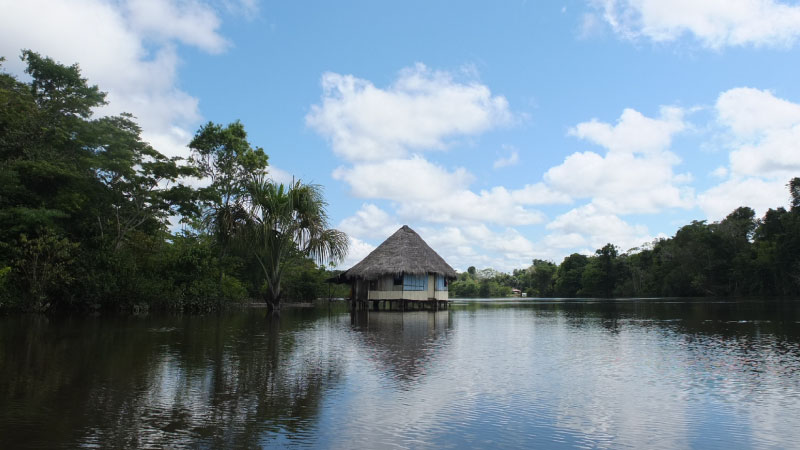Publications and Other Resources

Videos
Publications
Saavedra MP, Conn JE, Alava F et al. (2019) Higher risk of malaria transmission outdoors than indoors by Nyssorhynchus darlingi in riverine communities in the Peruvian Amazon. Parasites Vectors 12, 374 https://parasitesandvectors.biomedcentral.com/articles/10.1186/s13071-019-3619-0
Carrasco-Escobar G, Manrique E, Ruiz-Cabrejos J et al. (2019) High-accuracy detection of malaria vector larval habitats using drone-based multispectral imagery. PLoS Neglected Tropical Diseases 13(1): https://journals.plos.org/plosntds/article?id=10.1371/journal.pntd.0007105
Prussing C, Saavedra MP, Bickersmith SA et al. (2019) Malaria vector species in Amazonian Peru co-occur in larval habitats but have distinct larval microbial communities. PLoS Negl Trop Dis 13(5): https://doi.org/10.1371/journal.pntd.0007412
Title: Population genetics of immature and adult Nyssorhynchus darlingi in the Brazilian Amazon Region
Abstract: Population genetics studies of tropical diseases vectors can illuminate aspects of population structure that could lead to new interventions to reduce pathogen transmission. Nowadays, the generation of genetic markers is a bottleneck since most of the vectors are not model organisms with available whole genome sequences and often it is necessary to employ a high number of markers to investigate sympatric populations. The recent development of next generation sequencing (NGS) technology in association with restriction enzyme techniques has provided different methodologies to generate such markers. Genotyping by sequencing (GBS) and RAD-Seq (Restriction Associated DNA sequencing) are technologies that have great potential. We report here a novel optimized approach for a low-density DNA sequencing technique that uses transposases to generate whole genome libraries for NGS. The protocol is adapted to use as little as 200pg of DNA per specimen. The technique was used successfully on larvae of anopheline mosquitoes collected in the Amazon of Peru or Brazil and generated two different groups of data: whole mtDNA sequences; and SNPs from nuclear DNA. Whole mtDNA sequences were used for taxonomic identification of the larvae, detecting a majority of Nyssorhynchus darlingi specimens, but also the presence of Ny. rangeli, Ny. triannulatus, Ny. konderi, An. mattogrossensis, Ny. oryzalimnetes, Ny. dunhami, and An. costai. With Nyssorhynchus darlingi it was possible to observe the presence of both northern and southern mitochondrion haplotypes. We obtained 568 polymorphic sites from nuclear DNA that were used to study isolation by distance of larvae from different breeding sites and we observed high migration between these sites. The methodology described here was efficient in the generation of genetic markers (either from mtDNA and nuDNA) that are affordable and high throughput, to study population genetics of malaria vectors at Amazon Basin.
Title: Using low density DNA sequencing to access genetic variability on Nyssorhynchus darlingi
Abstract: Nyssorhynchus darlingi represents the major malaria vector in the Amazon basin. Behavioral traits modified by changing environments might represent an increase in the complexity of its role as a Plasmodium vector. Until now, it is not known if different behaviors such as flight dispersal, time of blood meal intake, or preference to enter houses are linked to the genetic background of the mosquito. In order to study this possible association, we performed mosquito genotyping of Nyssorhynchus darlingi populations in Mâncio Lima (Acre, Brazil) collected from different ecological niches. Each mosquito was genotyped by low-density whole genome sequence and SNPs from nuclear DNA were generated to assess the samples. A total of 1,237,435 SNPs were generated and a portion of them were used to compare larvae and adults, adults collected inside and outside the houses, and adults collected at different periods during the night. Results showed high dispersal among breeding sites around houses. There was no correlation between breeding sites or preference to enter houses and time of biting. Therefore we suggest that the capacity to enter the house and biting time are behaviors associated with the mosquito genetic background. The understanding of the genes related to these behaviors could lead to a more comprehensive analysis of vector structure and possibly new tools to reduce malaria transmission.
Title: Nyssorhynchus darlingi in artificial breeding sites in a high urban malaria transmission area, Vale do Jurua, Brazilian Amazon
Abstract: Knowledge of vector biology is essential to design controls strategy for mosquito-borne disease and, to this end, entomological research in high-risk areas is fundamental to understanding disease dynamics, such malaria in the Amazon Region. In the last existing tropical biome, the Amazon, with great resource capacity (water, energy, minerals, biodiversity), is the Vale do Jurua, an important example of how malaria has emerged and is being maintained regionally. The municipalities of the Vale do Jurua created an economic development plan to increase family income via the construction of fishponds, that had the unintended consequence of opening artificial larvae habitats for anopheline species, particularly for the dominant malaria vector Ny. darlingi. The present study shows an entomological profile for larvae and adults from the rainy to dry season (February through September), for three independent landscapes in Mâncio Lima city, Acre state. From a total of 336 valid fish ponds analyzed during six months, 10,665 larvae were collected of which 49.36% corresponded to L2, L3 and L4 stages, and Ny. darlingi represented 8.6% of these three stages. Variables correlated with the presence of Ny. darlingi included aquatic vegetation, permanent water body, and active fish ponds. Temperature restricted the presence of Ny. darlingi but other independent variables had no effect (pH, conductivity, turbidity, shade). Ny. darlingi larvae proportion (numbers/total larvae identified) and abundance/pond had a seasonal effect, suggesting a contribution of fish ponds to the maintenance of the dominant vector population. This feature of the dynamics of Ny. darlingi can provide insights into integrated control.

